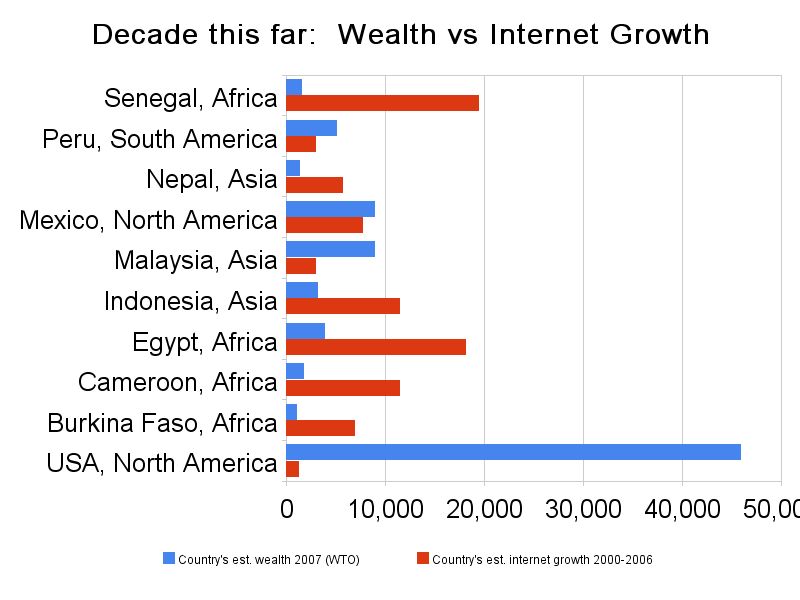The place has grown since I lived there in the mid 1980s. My wife is back in Yaounde again, and just shared the photo below by Facebook, the view from her hotel.

One thing is the same. Electricity. Yaounde had electricity when I arrived in 1984. And had the first television broadcasts by the end of 1986 (showing Alex Haley's "Roots" in English to people who didn't speak English... it was awkward).
So, since television stations started broadcasting in 1986, not even counting the CRT televisions people had to watch VCR tapes with before that, how many "e-waste" televisions would you expect to find in the Yaounde dump in 2006?
If you can count over 12 of them in the Guardian's "e-waste Chernobyl" photos, how long were the twelve TVs sitting there on the ground? Is it so difficult to image the city above can generate as many TVs as the town of Middlebury, Vermont?
Don't the statistics from the UN studies start to sound less crazy? Doesn't it start to make sense that it's only 9% fallout (unrepairable, tossed) rather than 80%? If it was only 20 percent reuse, how many containerloads of TVs would they need to set the city up with television?
Or maybe, that's not the point.
"Back to Eden Project".

Ah! That's better! That's the way Europe likes to remember Africa.
No TVs, no radios, no computers, no hassle. A tropical paradise.
Now, cue the crouching children. Oh, shoot. No crouching children in the rain forests. They are still crouching at the city dump.

Pictures of Africa suitable for Europe? Picture this: African kids playing free vintage games on used CRTs. And no, they cannot hear our healthy "tsk, tsks" across the Atlantic.

One thing is the same. Electricity. Yaounde had electricity when I arrived in 1984. And had the first television broadcasts by the end of 1986 (showing Alex Haley's "Roots" in English to people who didn't speak English... it was awkward).
So, since television stations started broadcasting in 1986, not even counting the CRT televisions people had to watch VCR tapes with before that, how many "e-waste" televisions would you expect to find in the Yaounde dump in 2006?
If you can count over 12 of them in the Guardian's "e-waste Chernobyl" photos, how long were the twelve TVs sitting there on the ground? Is it so difficult to image the city above can generate as many TVs as the town of Middlebury, Vermont?
Don't the statistics from the UN studies start to sound less crazy? Doesn't it start to make sense that it's only 9% fallout (unrepairable, tossed) rather than 80%? If it was only 20 percent reuse, how many containerloads of TVs would they need to set the city up with television?
Or maybe, that's not the point.
"Back to Eden Project".

Ah! That's better! That's the way Europe likes to remember Africa.
No TVs, no radios, no computers, no hassle. A tropical paradise.
Now, cue the crouching children. Oh, shoot. No crouching children in the rain forests. They are still crouching at the city dump.
Pictures of Africa suitable for Europe? Picture this: African kids playing free vintage games on used CRTs. And no, they cannot hear our healthy "tsk, tsks" across the Atlantic.





